Known for Performance | Role Artist Name Mike Parr | |
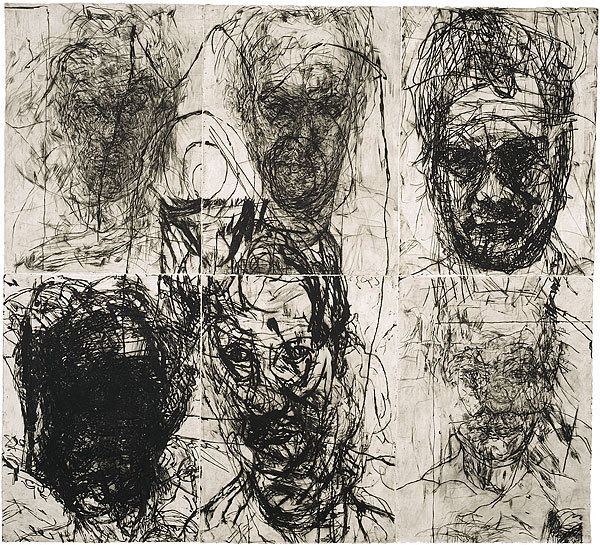 | ||
Artwork Blind obedience, Interjection of a Horse | ||
Artist mike parr on his artmaking practice
Mike Parr (born 1945) is an Australian performance artist and printmaker. Parr's works have been exhibited in Australia and internationally, including in Brazil, Cuba, France, Germany, Hungary, Japan, Korea, Taiwan and the United States.
Contents
- Artist mike parr on his artmaking practice
- Mike parr at the biennale of sydney
- Early life
- Career
- Works
- Exhibitions
- Awards
- Collections
- References
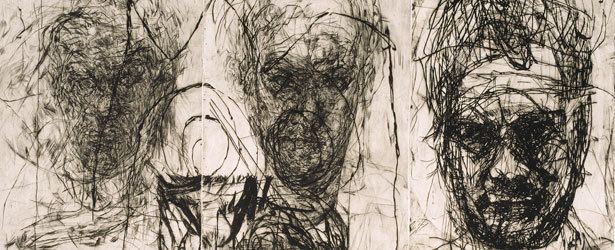
Mike parr at the biennale of sydney
Early life
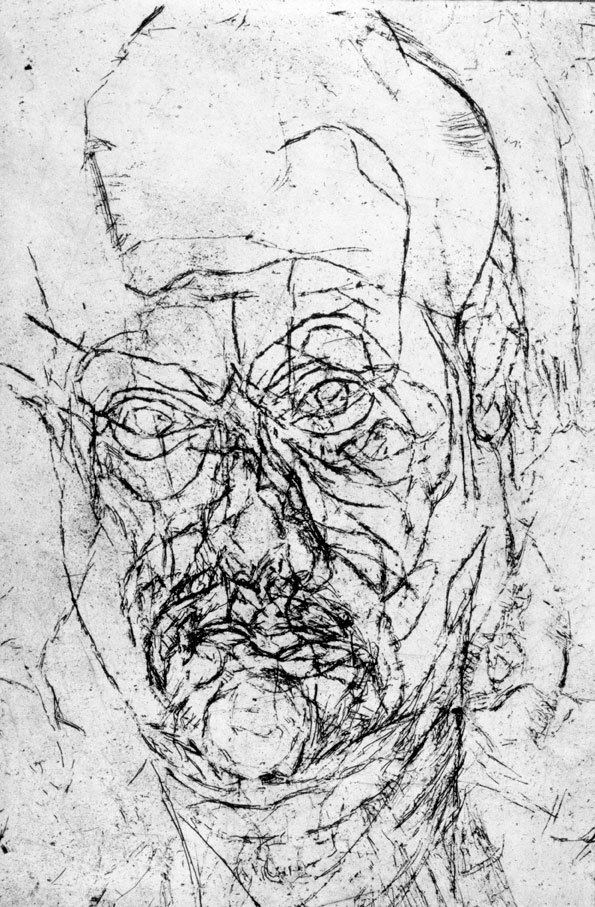
Parr spent his childhood in rural Queensland. He was born with a misshapen arm, and this physical characteristic has featured within his art work. Parr commenced an arts/law degree at the University of Queensland in 1965 but discontinued his studies the following year.
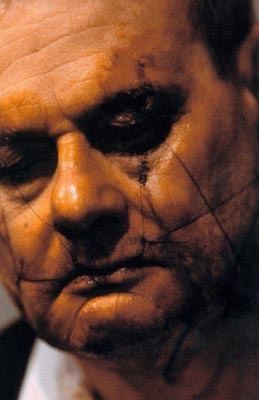
He is the brother of installation/photography artist, Julie Rrap (formerly Julie Brown-Rrap).
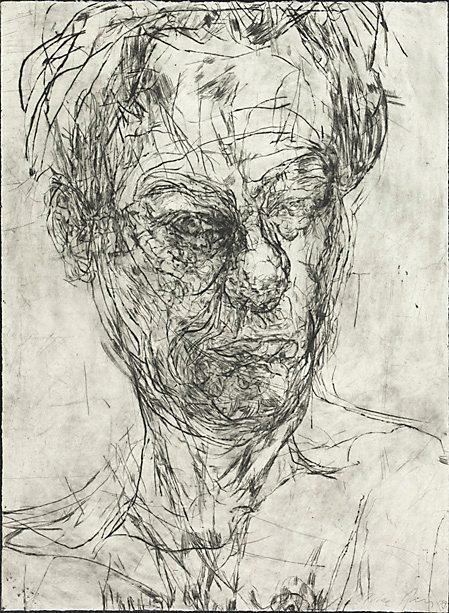
Parr moved to Sydney and, in 1968, briefly enrolled at the National Art School to study painting. In 1970, with Peter Kennedy, he established "Inhibodress", an artists' cooperative and alternative space for conceptual art, performance art and video.
Career
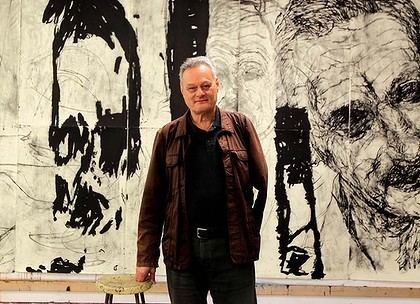
Parr's performances explore physical limits, memory and subjectivity. They often depict self-mutilation or extreme physical feats (as in the case of 100 Breaths). The performances are documented photographically and on video.
Parr's print making is a striking contrast, both emotionally and visually to his video/installation work, consisting of beautiful etchings featuring a barrage of raw and spiky lines. Parr has been fascinated with observation and the possibilities and responses of memory distortions. His "landscape" prints are such depictions – memories of views passed by.
Of his reasons, he states "I started drawing in 1981 because around that time I stopped doing the body art performances that I'd done throughout the 1970s." though later he returned to physical performance.
Works
Parr's early works were designed to get a reaction from the audience, though he also focused on exploring questions of identity, memory, and states of being. He particularly used his body as a performative tool, often using his prosthetic arm and testing the physical limits of his body through endurance challenges.
For one of Parr's earlier works, he sat in front of his audience and began talking to them in a conversational manner, then very suddenly suddenly brandishes an axe and begins hacking into his prosthetic arm which he had filled with minced meat and fake blood. Most of the people in the audience were not aware of his disability, and therefore shock factor was the main aim.
In the late 60's, Parr's performances were started with "psychotic" episodes in which he cut and attacked his body, which he cites as "psychotic operation(s)".
In 1971 he began to write his book "Programmes & Investigations" in which he recorded grotesque performance ideas, including letting a dog drink the performer's blood and sewing a fish onto one's skin. By 1973, he had listed over 150 different ideas, performing the actions as he wrote them down, and it became the basis for his activity for more than a decade.
In 1981 Parr stopped performing and began painting and printmaking, later returning to performance art in the 90's.
In 2002, Parr's most challenging performance, "For Water from the Mouth" was held at the gallery Artspace – a work of ten whole days where Parr was isolated in a room with no human contact, and nothing but water to keep him alive. His every action was surveyed by surveillance cameras and broadcast live on the internet for 24 hours a day.
"A stitch in time" was another of his performances, a live web cam showing Parr having his lips and face extensively stitched with thread into a caricature of shame.
In 2003, one of Parr's extended performances was as live web broadcast received more than 250,000 hits in the first 24 hours alone. For 30 hours Parr sat in a gallery (again at Artspace) with his non-prosthetic arm nailed to the wall in opposition to the Australia government's treatment of refugees and asylum seekers. This was called "Malevich (A Political Arm)".
Exhibitions
Selected Solo Exhibitions
Cloacal Corridor (O Vio Prote/O Vio Proto/O Vio Loto/O Thethe) Self Portrait as a Pair or Self Portrait as a Pun, drawing installation; Identification Number 1 (Rib Markings in the Carnarvon Ranges, North-West Queensland), January 1975, photoseries Screenings of Rules and Displacement Activities Parts I, II and III; Performance presentation from George Brecht's WaterYam, Institute of Modern Art, Brisbane. Curator: Barbara Campbell Drawings, Art Projects, Melbourne
3 Installations, City Gallery, Melbourne; Mike Parr, Roslyn Oxley9 Gallery, Sydney Survey of Recent Work, Art Gallery of New South Wales, Sydney; Perth Institute of Contemporary Art, Perth
Black Mirror/Pale Fire, Various Routes, Whistle/White, 3 performances, Ivan Dougherty Gallery, University of New South Wales, Sydney
Echolalia (the road): Prints from the Self Portrait Project: Mike Parr 1987–1994, National Gallery of Victoria, Melbourne 100 Breaths/100 Songs from (ALPHABET/ HAEMORRHAGE) Black Box of 100 Self Portrait Etchings 5, 1993–1994, performance, Art Gallery of South Australia, Adelaide Fathers 11 (The Law of the Image), installation, Experimental Art Foundation, Adelaide The Bridge, performance, Art Gallery of New South Wales, Sydney
Day Break, performance, Scene Shop at the Cultural Centre of Manila, Manila
Head on a Plate, New York Studio School, New York The White Hybrid (Fading), performance, Artspace, Cowper Wharf/Artspace, Sydney Unword, performance, University of Western Australia
Female Factory, 7 hour performance, 25.4 Australian Centre for Contemporary Art, Melbourne Blood Box, 24-hour performance, 6.9/7.9, Artspace, Sydney Boubialla Couta, (performance), College of Fine Arts, Sydney The Rest of Time, Sherman Galleries Goodhope, Sydney Mike Parr, Sherman Galleries Hargrave, Sydney Photo-Realism, Anna Schwartz Gallery, Melbourne
Wrong Face, Anna Schwartz Gallery, Melbourne Three Collaborations, Sarah Cottier Gallery, Sydney
Shallow Grave, 3-day performance, 7.7–9.7 12th Biennale of Sydney, Art Gallery of New South Wales, Sydney
John Kaldor Art Project 2: Szeemann: I want to leave a nice welldone child here (20 Australian Artists), Bonython Gallery, Sydney; National Gallery of Victoria, Melbourne
Recent Australian Art, Art Gallery of New South Wales, Sydney
Tall Poppies, an exhibition of five pictures, University Art Gallery, University of Melbourne D'un autre continent 'L'Australie, Le réve et le réel', ARC/Musée d'Art Moderne de la Ville de Paris
An International Survey of Recent Painting and Sculpture, The Museum of Modern Art, New York
Australian Perspecta 85,Art Gallery of New South Wales, Sydney
Origins, Originality & Beyond, The Sixth Biennale of Sydney, Art Gallery of New South Wales; Pier 2/3, Walsh Bay, Sydney
Edge to Edge: Australian Contemporary Art to Japan, National Museum of Art, Osaka; Old and New Hara Museums, Tokyo; Nagoya City Museum, Nagoya; Hokkaido Museum, Sapporo
Spirit & Place: Art in Australia 1861–1996, Museum of Contemporary Art, Sydney
Body, Art Gallery of New South Wales In Place (Out of Time): Contemporary Art in Australia, Museum of Modern Art, Oxford; Art Gallery of Western Australia, Perth
Southern Reflections: An Exhibition of Contemporary Australian Art to Northern Europe, Kulturhaus, Stockholm, Sweden; Konathallen Götsberg, Gothenburg, Sweden; Arhus Konstmuseum, Arhus, Denmark; Museum Tamminiementle (City Art Museum), Helsinki; Neues Museum, Bremen, Germany; Staatliche Sammlung für Kunst, Chemnitz, East Germany Telling Tales, Ivan Dougherty Gallery, University of New South Wales, Sydney
Five Continents and One City. Curator: Gao Minglu, Mexico City Gallery, Mexico The Liverpool Biennale, Liverpool, UK Global Conceptualism: Points of Origin, Queens Museum, The Walker Art Centre, Miami Art Centre and other American Museums, 1999/00
Awards
Collections
National Gallery of Australia, the Museum of Contemporary Art in Sydney, all state and many regional galleries, tertiary collections, the National Library in Canberra, Parliament House, Canberra, Chartwell Collection in New Zealand, Chase Manhattan Bank in New York, First National Bank in Chicago, The Michael Buxton Contemporary Australian Art Collection, Art Gallery of Ballarat
